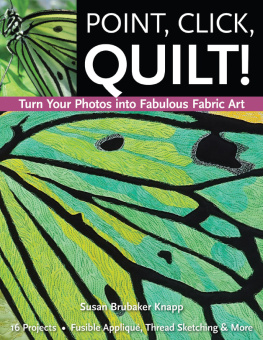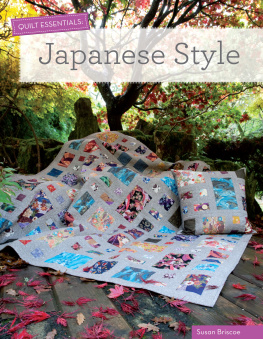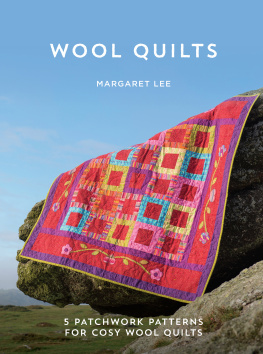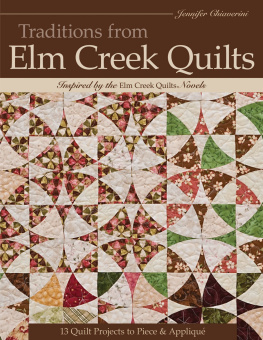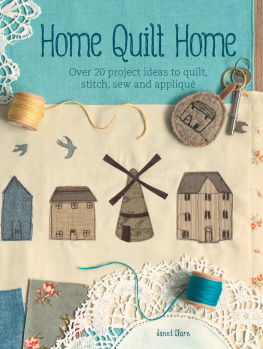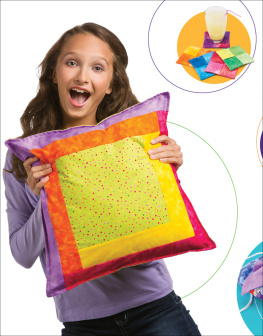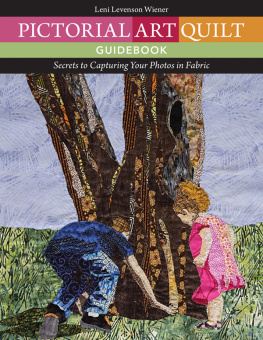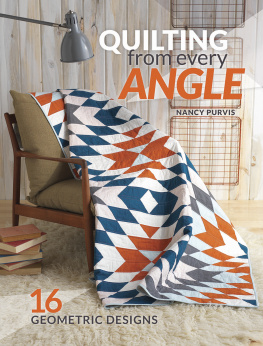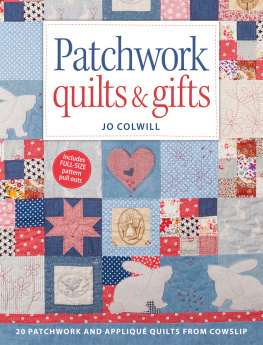
Text and Photography copyright 2011 by Susan Brubaker Knapp
Photography and Artwork copyright 2011 by C&T Publishing, Inc.
Publisher: Amy Marson
Creative Director: Gailen Runge
Acquisitions Editor: Susanne Woods
Editor: Liz Aneloski
Technical Editor: Nanette S. Zeller
Copyeditor/Proofreader: Wordfirm Inc.
Cover Designer: Kristen Yenche
Book Designer: Christina D. Jarumay
Production Coordinator: Zinnia Heinzmann
Production Editor: Julia Cianci
Illustrator: Tim Manibusan
Quilt Photography by Christina Carty-Francis and Diane Pedersen of C&T Publishing, Inc., and how-to and inspirational photography by Susan Brubaker Knapp, unless otherwise noted
Published by C&T Publishing, Inc., P.O. Box 1456, Lafayette, CA 94549
All rights reserved. No part of this work covered by the copyright hereon may be used in any form or reproduced by any meansgraphic, electronic, or mechanical, including photocopying, recording, taping, or information storage and retrieval systemswithout written permission from the publisher. The copyrights on individual artworks are retained by the artists as noted in Point, Click, Quilt! Turn Your Photos into Fabulous Fabric Art. These designs may be used to make items only for personal use or donation to nonprofit groups for sale or for display only at events, provided the following credit is included on a conspicuous label: Designs copyright 2011 by Susan Brubaker Knapp from the book Point, Click, Quilt! Turn Your Photos into Fabulous Fabric Art from C&T Publishing, Inc. Permission for all other purposes must be requested in writing from C&T Publishing, Inc.
Attention Copy Shops: Please note the following exception publisher and author give permission to photocopy pages 38, 41, 44, 47, 50, 53, 56, 60, 64, 68, 74, 79, 87, 91, 94, and 97 for personal use only.
Attention Teachers: C&T Publishing, Inc., encourages you to use this book as a text for teaching. Contact us at 800-284-1114 or www.ctpub.com for lesson plans and information about the C&T Creative Troupe.
We take great care to ensure that the information included in our products is accurate and presented in good faith, but no warranty is provided nor are results guaranteed. Having no control over the choices of materials or procedures used, neither the author nor C&T Publishing, Inc., shall have any liability to any person or entity with respect to any loss or damage caused directly or indirectly by the information contained in this book. For your convenience, we post an up-to-date listing of corrections on our website ( or at P.O. Box 1456, Lafayette, CA 94549.
Trademark () and registered trademark () names are used throughout this book. Rather than use the symbols with every occurrence of a trademark or registered trademark name, we are using the names only in the editorial fashion and to the benefit of the owner, with no intention of infringement.
Library of Congress Cataloging-in-Publication Data
Knapp, Susan Brubaker.
Point, click, quilt! : turn your photos into fabulous fabric art 16 projects : fusible appliqu, thread sketching & more / Susan Brubaker Knapp.
p. cm.
ISBN 978-1-60705-226-5 (softcover)
1. Quilting--Patterns. 2. Transfer-printing. 3. Drawing from photographs. I. Title.
TT835.K563 2011
746.46--dc22
2010046183
Printed in China
10 9 8 7 6 5 4 3 2 1
DEDICATION
To my daughters, Lea and Julia, who are always teaching me how to seeand to my mother, Eleanor Carter Brubaker (19362011)
ACKNOWLEDGMENTS
Many thanks to
my supportive husband, Rob,
the entire creative team at C&T Publishing,
and my friends in the Pandoras, Fiber Art Options, and Lake Norman Quilters.
INTRODUCTION
W hile I have always enjoyed taking photos, it took me a while to realize how much photography could be a part of my artistic process. Like much of what I do now for a living, I have never studied it in a classroom. My brother and parents shared a darkroom space in our back basement when I was a teenager, but I completely ignored it. My first real desire to take better photos began about a decade ago when I had my first child and wanted to take shots to capture the wonder of those first amazing days.
Several years ago, I started taking photographs in a more deliberate way. I began thinking about photography almost as a form of meditation or deep study of what was. When you take photography seriously, it forces you to be in the moment, and an hour or two spent shooting in a garden, on a city street, or on a mountain hike can leave you serene and perfectly centered, and at the same time bursting with creative energy.
Perhaps you already enjoy taking photos, or have at least taken snapshots of vacations or special occasions. If so, this book is a guide to thinking about photography in a different way, as a way of truly learning to see and appreciate what is around you and to record it in a meaningful way. The kinds of subjects you find most interesting will teach you much about what you enjoy, what attracts you, and what you want to communicate through your work. And the shots you take will provide you with a deep well of ideas and images you can use.
The first chapters of this book include concrete information about how to take better photos, based on the elements of art and basic design principles. They include specific suggestions and tips and a series of missions you can do on your own or with friends that will start you down the path of learning to see with an artists eye. You dont need a lot of materials or equipment, just an inexpensive digital camera and the desire to try looking at the world in a different way.
This book does not include projects that deal with the human face or form, which are the subject of other excellent books specifically on the subject. The projects here, based on my photos, are a great way to learn new techniques. Some are realistic subjects, some explore the process of abstraction, and some use materials that may be new to you. Try a few of my projects and then go out and take photos for projects you can make completely your own.


C reativity involves not only imagining great new things, but acting on that imagining. It is a process of considering new possibilities, combinations, connections, or alternatives and then using those ideas to solve a problem or to communicate an idea or value. For the visual artist, creativity begins with what I call learning to see.
The difference between looking and seeing is akin to the difference between existing and living. Looking is passive, but when you see, you form an intimate connection with what you are viewing.


Heres an example. You are walking down a sidewalk in your neighborhood, past a neighbors hydrangea bush in bloom. Thats pretty, you think, and keep walking.
You have just looked at the hydrangea, but you have not really seen it. Go back. Notice the way the recent rain has left raindrops on the petals that reflect sparkles of blue sky; the way the new growth is a marvelous chartreuse green next to the duller green older growth; the perfect symmetry of the leaves; the vein structure and the tightly curled buds with tiny sections, waiting to open; the first blush of lavender blue on the pale green-white flowers; the marvelous serrated edge of the leaves lined in a lighter green.
Next page
